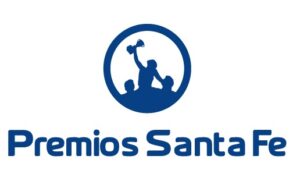The Reconciliation Control Tower provides a comprehensive overview of the reconciliation status of all accounts within the COA. By offering real-time visibility into variances and discrepancies, this tool helps finance teams quickly identify and address issues, ensuring that the COA reflects accurate and current financial data. The COA provides the structure that the GL operates within; every account in the GL must first be defined and listed in the COA. The GL then populates these predefined accounts with actual transactional data, recording the debits and credits that reflect a company’s financial activities. Designing a functional Chart of Accounts (CoA) is a critical step in ensuring that an organization’s financial reporting is both accurate and comprehensive. A well-structured CoA serves as the backbone of a company’s accounting system, allowing for the systematic recording, classification, and reporting of financial transactions.
How to Set Up a Chart of Accounts for Small Businesses
Expert insights and tips on accounting, financial strategies, and industry trends. In addition to maintaining consistency when possible, another good practice is to limit unnecessary detail and only document what’s significant. When there’s no reason to have multiple accounts, combine them and err on the side of simplicity.
In contrast, the general ledger is where all financial transactions of a company are recorded and summarized using the accounts from the COA. The structure of a COA not only facilitates accurate financial recording and reporting but also ensures that all financial transactions are accounted for systematically. This significantly aids organization in financial analysis, compliance, and decision-making. By selecting the appropriate type of COA, businesses can achieve more accurate and efficient financial management.
- This involves a strategic approach to categorizing transactions, maintaining consistency in entries, and utilizing technology to automate repetitive tasks.
- For example, asset accounts might start with 1, liability accounts with 2, equity accounts with 3, and so on.
- You must design your calendar based on your business and management practice.
- When the clock is sold, the company debits cost of goods sold for $40 and records a $40 credit for revenue to indicate the sale of the clock.
- The automatic journal used to generate the closing entry is determined by means of the GAUFIYCL parameter.
and Reporting
A chart of accounts has accounts from the balance sheet and income statement and feeds into both of these accounts. In accounting, a standard chart of accounts is a numbered list of the accounts that comprise a company’s general ledger. Furthermore, the company chart of accounts is basically a filing system for categorizing all of a company’s accounts as well as classifying all transactions according to the accounts they affect. Liabilities, conversely, would include items that are obligations of the company (i.e. loans, accounts payable, mortgages, debts). Debits and credits are traditionally distinguished by writing the transfer amounts in separate columns of an account book.
Is there a standard chart of accounts structure?
For instance, if you rent, the money moves from your cash account to the rent expense account. Expense accounts allow you to keep track of money that you no longer have. The chart of accounts streamlines various asset accounts by organizing them into line items so that you can track multiple components easily. You will need to eliminate the intercompany balances, as you do in a single ledger.
- With 200+ LiveCube agents automating over 60% of close tasks and real-time anomaly detection powered by 15+ ML models, it delivers continuous close and guaranteed outcomes—cutting through the AI hype.
- This is a powerful feature as each accounting representation represents an alternate accounting interpretation of the underlying subledger transaction.
- You can drill from ledger set balances to transaction data, and you can report on a ledger set as one ledger.
- Businesses relied on basic ledgers and single-entry systems, often resulting in inconsistencies due to trial and error and informal categorization.
Balance Sheet
Enter the code of the dimension types of the current ledger.A dimension type can be common to several ledgers, irrespective of whether the chart of accounts vs general ledger latter belong to the same account core model or not. The order in which the codes of the dimension types are entered has an impact on the setup of the previous dimension types of the default dimensions. The accounting type(s) of the chart of accounts must be consistent with those of the ledger.
Meanwhile, an accountant views them as daily routines that safeguard the financial health of the business. Ledger balancing is a complex task that requires diligence and expertise. By being aware of these common pitfalls and actively working to avoid them, professionals can ensure the integrity of financial records and the accuracy of financial reporting. For example, consider a scenario where an accountant fails to adjust the prepaid insurance account at year-end.
Financial Accounting and Its Importance: A Detailed Guide
While smaller businesses may have a simpler, less detailed COA, larger enterprises might require a more complex and detailed structure to accommodate various departments, projects, or locations. This numbering system can vary greatly depending on the size of the business and its specific needs, but it generally follows this logical progression to keep financial activities well-organized. But experience has shown that the most common format organizes information by individual account and assigns each account a code and description.
Best Practices for Ledger Management
We provide third-party links as a convenience and for informational purposes only. Intuit does not endorse or approve these products and services, or the opinions of these corporations or organizations or individuals. Intuit accepts no responsibility for the accuracy, legality, or content on these sites.
Each ledger has an accounting calendar, which represents a period of time in General Ledger, defined by a start and end date. You must design your calendar based on your business and management practice. Manufacturing businesses often use calendars with periods and quarters that end on weekends and are equal, for comparability and standards calculation. Together with the General Ledger Currency Revaluation feature, you can configure any of these alternatives to comply with your Generally Accepted Accounting Principles (GAAP) currency circumstances.



















